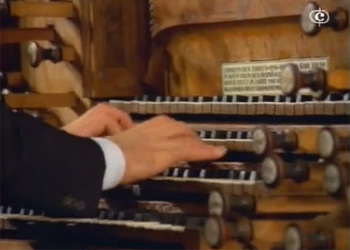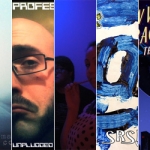
You’re in a dark, dank, dungeon-like room, lit only by the feeble light from a few torches placed in widely-spaced brackets along the stone walls. Ahead, in the eerie glow of some unearthly light, you are surprised to see a pipe organ in such an unlikely place. A figure in a dark cloak is sitting on the bench, hunched over the keyboards. He stretches out his thin arms, spreads pale, bony fingers on the keys, and begins to play. A single, descending melody line echoes in the cavernous space before being repeated, this time in a lower octave and another time still lower. One note at a time, starting almost inaudibly but growing ever louder, a great minor chord is built, and held, and then resolved.
You know you can hear it in your head, just from the scene I described above, but what is that piece that has become synonymous with phantoms, vampires, and all manner of other spooky situations? It is not the work of some Hollywood soundtrack composer, it is a piece that has been around far longer than that, and was not originally intended to be particularly scary. Because of its use in creating dark and sinister atmospheres, however, it is probably the most famous piece that Johann Sebastian Bach ever wrote: the Toccata and Fugue in D Minor.
Here it is, played in a setting similar to that in which the people of Bach’s day would have heard it — in a church.
In the early 18th century, gigs for musicians were limited to either working in a nobleman’s court or working for the church, and Bach worked in both places at various times. In addition to composing music for his employer (whether it was a duke, prince, or a church), Bach also led groups of musicians and played an instrument himself. In fact, especially early on in his career, Bach was actually more famous as an organist than a composer. Because he played so much, he wrote a great deal of organ music, much of which still forms the basis of the repertoire for organists today. This piece is in two parts, as suggested by the title. The Toccata is the shorter section at the beginning, and is a “free” section, meaning that there is no set structure that defines or describes it. The second part, however, definitely has a structure. A fugue is a musical form where a melodic theme is presented and then repeated in progressively higher or lower pitches. The next repetition of the theme starts when the previous one has finished. Once all of the repetitions (called “voices”) have been played, fragments of the theme are played and expanded upon to fill out the rest of the piece. The fugue of the Toccata and Fugue in D Minor has four voices, and it begins at about the 3:15 mark in this video.
There are many versions of the Toccata and Fugue available on YouTube, but I chose the one above mainly for the instrument being used. It appears to be similar to the type of organ Bach would have played, and it is in what appears to be a church with Baroque-style architecture — the style that was popular in Bach’s time. The organ has five keyboards. Four of them are called manuals and are the ones that look like a shorter version of a piano keyboard and are played with the hands. The fifth keyboard is the one played by the organist’s feet — the pedals — and you can see them in action later on in the video. The man standing behind the organist is there to help him pull out and push in the knobs that are all around the console. These are called “stops” and they control which sets of pipes are in use. If you’ve ever heard the phrase “pull out all the stops,” this is where it comes from — if you pull out all the knobs, then you are engaging every set of pipes that the organ has, thus creating a huge sound when you start to play.
It’s amazing what context will do for a piece of music. Although it wasn’t originally intended to be spooky or scary, a century of hearing the Toccata and Fugue in D Minor being used that way has cemented it in our brains as the epitome of scary music. Spooky sounds didn’t stop with Bach, though. Join me very soon in the next Geek’s Guide installment when we look at several 19th century composers who wrote music that was intended to scare the pants off of their audiences!






